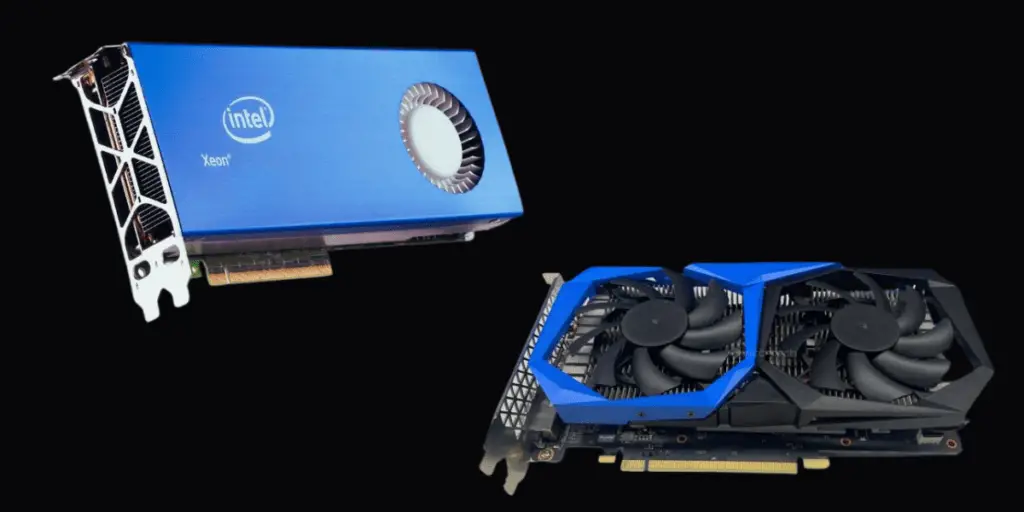Intel Aurora supercomputer has shattered the exascale computing threshold, achieving unprecedented speeds of 1.012 exaflops.
Developed in collaboration with Argonne National Laboratory and Hewlett Packard Enterprise, Aurora’s capabilities are set to revolutionize fields ranging from climate science to particle physics, showcasing the immense potential of AI-driven high-performance computing.
Intel Aurora
Exascale computing represents a transformation in computational power, marked by the ability to perform a quintillion calculations per second.
This level of performance opens new possibilities for scientific research and technological innovation, enabling researchers to tackle problems of unparalleled complexity and scale.
Achieving exascale computing is not merely about speed; it signifies a profound enhancement in our capacity to simulate, model, and understand intricate systems across various scientific domains.
From predicting climate patterns with greater accuracy to digging into the mysteries of the universe, exascale supercomputers like Aurora serve as powerful tools driving forward the frontiers of knowledge.
Intel’s Aurora breaking the exascale barrier at 1.012 exaflops marks a pivotal milestone in this journey. By becoming the fastest AI-focused system globally, Aurora sets a new benchmark for what can be achieved with AI and HPC.

This accomplishment highlights the synergy between cutting-edge hardware and sophisticated software, creating a robust platform that supports groundbreaking scientific discoveries and innovations.
Aurora’s capabilities demonstrate the transformative potential of exascale computing, promising to revolutionize fields such as genomics, materials science, and drug discovery.
Aurora’s Capabilities
Its capabilities stem from a combination of advanced hardware, cutting-edge architecture, and robust software tools, making it a formidable tool for scientific research and discovery.
Aurora was conceived with a clear focus on AI, enabling researchers to harness generative AI models that significantly accelerate scientific discovery.
Unlike traditional supercomputers, Aurora’s architecture is optimized to support complex neural network computations, making it an ideal platform for AI-driven research.
This design philosophy ensures that Aurora is a powerhouse of computational speed and a versatile tool tailored for AI applications.
At the heart of Aurora lies the Intel Data Center GPU Max Series, which leverages the innovative Intel Xe GPU architecture.
This architecture is designed to handle both AI and HPC tasks and features specialized hardware like matrix and vector compute blocks.
These blocks are essential for executing the intricate matrix operations required by deep learning models, providing unparalleled compute performance for AI workloads.
Hardware Specifications
Aurora’s sheer scale and hardware configuration are awe-inspiring. The system comprises
- 166 racks housing the computational infrastructure.
- 10,624 compute blades that form the backbone of its processing power.
- 21,248 Intel Xeon CPU Max Series processors to manage diverse and complex tasks.
- 63,744 Intel Data Center GPU Max Series units constitute the most prominent GPU cluster globally.
This immense hardware setup allows Aurora to handle vast amounts of data and perform complex computations with exceptional speed and efficiency.
Aurora features the most prominent open, Ethernet-based supercomputing interconnect, with 84,992 HPE slingshot fabric endpoints, enhancing its data transfer capabilities and overall performance.
Aurora has already demonstrated its groundbreaking potential through various high-impact applications. Some notable achievements include:
Utilizing its AI capabilities to map the 80 billion neurons in the human brain, advancing our understanding of neural networks and brain functions.
Enhancing particle physics research through deep learning, aiding in discovering fundamental particles and forces.
Accelerating the drug discovery process using machine learning to identify potential drug candidates and optimize their efficacy.
Aurora’s advanced hardware is complemented by a suite of software tools designed to maximize its capabilities.
Intel’s one API DPC++/C++ Compiler and a rich set of performance libraries offer developers the flexibility and scalability to optimize AI models and HPC workloads.
These tools support an open ecosystem, enabling seamless integration and innovation across various devices and form factors.
Applications
One of Aurora’s achievements is in neuroscience. Utilizing its advanced AI capabilities, Aurora has successfully mapped the 80 billion neurons of the human brain.
This task, involving vast amounts of data and complex neural network computations, provides deeper insights into brain function and connectivity. Such detailed mapping can lead to breakthroughs in understanding neurological disorders and developing targeted treatments.
In the field of high-energy particle physics, Aurora has revolutionized research through its deep learning capabilities.
By processing massive datasets from particle collisions, Aurora aids scientists in identifying and analyzing fundamental particles and forces.
This enhanced understanding is crucial for advancing our knowledge of the universe’s basic building blocks, potentially leading to new theories and discoveries in physics.
Aurora’s impact on drug design and discovery is particularly noteworthy. By leveraging machine learning algorithms, Aurora accelerates the identification of potential drug candidates, optimizes their properties, and predicts their efficacy.
This rapid iteration process significantly shortens the drug development timeline, making it possible to bring new, effective treatments to market faster.

Such capabilities are vital in responding to health crises and advancing medical research.
Aurora also plays a pivotal role in climate science, enabling more precise and comprehensive climate modeling.
With its exascale computing power, Aurora can simulate and analyze climate patterns on an unprecedented scale, improving our understanding of climate dynamics and aiding in developing strategies to mitigate climate change.
This capability is essential for policymakers and researchers addressing the global climate crisis.
Aurora supports significant advancements in fusion energy research in the quest for sustainable energy.
Aurora helps scientists explore the feasibility and optimization of fusion as a clean energy source by simulating the conditions necessary for fusion reactions.
Performance and Benchmarks
Aurora made headlines by achieving 1.012 exaflops on the High-Performance LINPACK benchmark, a measure of a supercomputer’s floating-point computing power.
This performance secured Aurora a top position among the world’s fastest supercomputers. The HPL benchmark focuses on solving a dense system of linear equations, providing a standard metric to compare the computational capabilities of different supercomputers.
Aurora also excelled in the High-Performance LINPACK-Mixed Precision benchmark, which is specifically designed to evaluate the performance of AI workloads.
This benchmark is crucial for assessing a supercomputer’s ability to handle the mixed-precision computations typical of AI applications like deep learning.
Aurora’s top ranking in the HPL-MxP benchmark underscores its superiority in managing AI-driven tasks, further solidifying its position as the leading AI-focused supercomputer.
In addition to its HPL success, Aurora secured the third spot on the High-Performance Conjugate Gradient benchmark with a performance of 5,612 teraflops per second using only 39% of its machine.
The HPCG benchmark is designed to test a system’s performance in solving large, sparse linear systems, which are common in real-world scientific and engineering applications.
This benchmark provides insights into a supercomputer’s communication and memory access patterns, offering a more comprehensive evaluation of its real-world capabilities compared to HPL alone.
Aurora’s impressive benchmark results are supported by its advanced parallel processing capabilities and robust interconnect infrastructure.
With 166 racks, 10,624 compute blades, 21,248 Intel Xeon CPU Max Series processors, and 63,744 Intel Data Center GPU Max Series units, Aurora represents the largest GPU cluster worldwide.
This vast array of hardware allows Aurora to handle immense computational loads efficiently.
Aurora features the largest open, Ethernet-based supercomputing interconnect, comprising 84,992 HPE slingshot fabric endpoints.
This interconnect facilitates high-speed data transfer between components, minimizing latency and maximizing throughput.
The efficient data flow is critical for the performance of distributed applications, particularly those involving large-scale simulations and deep-learning models.
Complementing Aurora’s hardware prowess is a suite of advanced software tools provided by Intel.
These tools, including the Intel® oneAPI DPC++/C++ Compiler and a comprehensive set of performance libraries, enhance developer flexibility and system scalability.
Future Prospects
Intel’s next-generation supercomputers, integrated with the Intel Xeon CPU Max Series and Intel Data Center GPU Max Series technologies, are set to transform scientific research across multiple domains.
This supercomputer will enhance climate change modeling, providing more accurate predictions and deeper insights into climate dynamics.
Cassandra’s capabilities will be crucial for developing strategies to mitigate and adapt to the impacts of climate change.
Focused on advancing fusion energy research, CRESCO 8 will support breakthroughs in understanding and developing sustainable fusion power. This research is essential for achieving a future with clean, virtually limitless energy sources.
In total production, TACC will enable advanced data analysis in biology, supersonic turbulence flows, and atomistic simulations of materials. These capabilities are vital for innovations in healthcare, materials science, and engineering.
This system will address memory-bound problems when designing future fusion power plants. By solving these complex computational challenges, the UKAEA supercomputer will contribute to developing efficient and effective fusion reactors.
This new GPU will integrate the best of Intel’s Xe architecture with Intel Gaudi technology, delivering a unified programming interface and enhanced performance.
Falcon Shores aims to significantly boost AI and HPC applications, offering higher efficiency and greater computational power.
Early performance results for the Intel Xeon 6 with P-cores and Multiplexer Combined Ranks memory show a 2.3x performance improvement for real-world HPC applications, such as the Nucleus for European Modeling of the Ocean, compared to the previous generation.

This performance leap sets a strong foundation for Falcon Shores as a preferred host CPU choice for HPC solutions.
Intel is also expanding its Tiber Developer Cloud to support the evaluation, innovation, and optimization of AI models and workloads on a large scale.
This expansion includes incorporating new state-of-the-art hardware platforms and enhanced service capabilities. Key features of the expanded Tiber Developer Cloud include:
Offering select customers early access to cutting-edge hardware for developing and testing AI and HPC applications.
Providing powerful AI training and inference resources, enabling developers to scale their models efficiently.
Enhancing computational power for various AI and HPC tasks. Facilitating cloud-native AI training and inference workloads, supporting multiuser accounts, and enabling rapid deployment of AI models.
Intel’s open ecosystems will continue to drive collaborative innovation, as demonstrated by initiatives like oneAPI and the Unified Acceleration Foundation.
Final Thoughts
Aurora is the fastest AI-focused system globally, surpassing the exascale computing threshold with 1.012 exaflops, revolutionizing scientific research and technological innovation.
The significance of exascale computing lies not only in its extraordinary speed but also in its transformative potential across various scientific domains.
Aurora’s AI-centric design, powered by the Intel Data Center GPU Max Series and Xe GPU architecture, enables unprecedented advancements in neuroscience, particle physics, drug discovery, climate science, and fusion energy research.
These achievements underscore the system’s versatility and impact, driving forward the frontiers of knowledge and addressing some of humanity’s most complex challenges.
Aurora’s performance in critical benchmarks like the High-Performance LINPACK and High-Performance Conjugate Gradient highlights its exceptional computational power and efficiency.
The system’s comprehensive software ecosystem, including the Intel one API DPC++/C++ Compiler and performance libraries, further enhances its capabilities, providing developers with the tools to optimize AI models and HPC workloads.
Intel’s commitment to open ecosystems and collaborative innovation ensures that Aurora’s impact will continue to grow.
The expansion of the Tiber Developer Cloud, the introduction of next-generation technologies like Falcon Shores.
The deployment of new supercomputers integrated with Intel’s cutting-edge hardware all point to a future where scientific discoveries and technological breakthroughs are accelerated like never before.


